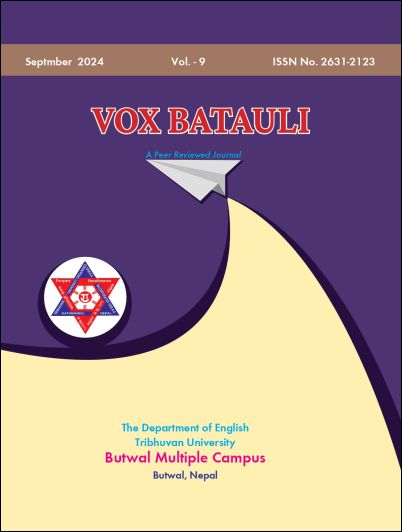Morphological Processes in English and Sanskrit: A Cross-Linguistic Study
DOI:
https://doi.org/10.3126/vb.v9i01.70409Keywords:
inflectional and derivational morphemes, nominal and verbal morphology, compounding, linguistic typologyAbstract
Morphology is the sub-discipline of linguistics. It is the study of morphemes and their arrangement in forming words. The present study attempts to identify and compare the morphological processes in English and Sanskrit. This study was based on qualitative methods and the selected documents of both languages were used as the research tools for this study. The results reveal that the English suffixes such as -age, -al,-ation,-ism, -ment, -ant, -ent, -er, and Sanskrit suffixes such as -ya/-eya, -man, -na, -an, -a, -ti -a, -ana, -ah, -ti, -tri, -aka, -man, are nominal derivational suffixes. The plural morpheme -s, and genitive morpheme -'s are English nominal inflectional morphemes whereas there are twenty-one inflectional suffixes (sup) (su, au, jas) in Sanskrit. Similarly, English verbal inflectional morphemes are -ed, -en, and -ing whereas there are eighteen verbal inflectional suffixes (tin) (tip, tas, jhi,) in Sanskrit. Furthermore, there are compound nouns (breakfast), verbs (fine tune), adjectives (open-ended), and adverbs (uprightly) in English. In contrast, there are only two special sub-class of exocentric compounds in Sanskrit, namely numerative (dvigu), and adverbials (avyayībhāva). As a comparative study, it can help identify the root knowledge of both languages as languages are related to each other.




